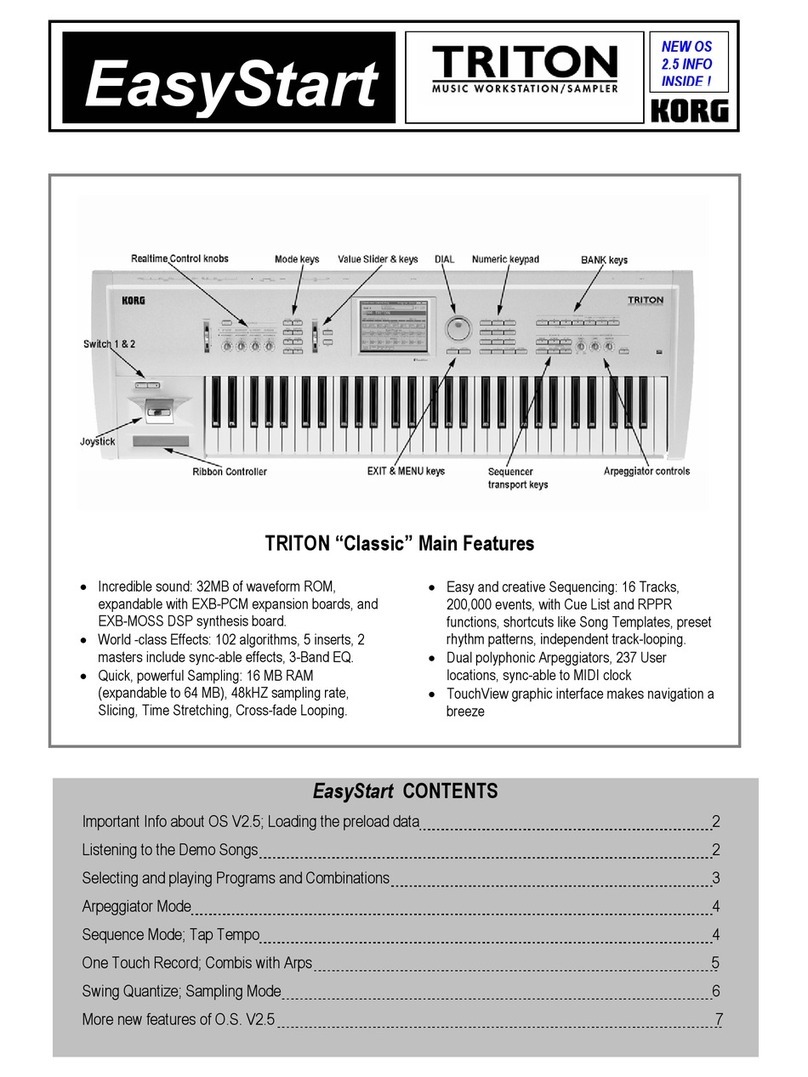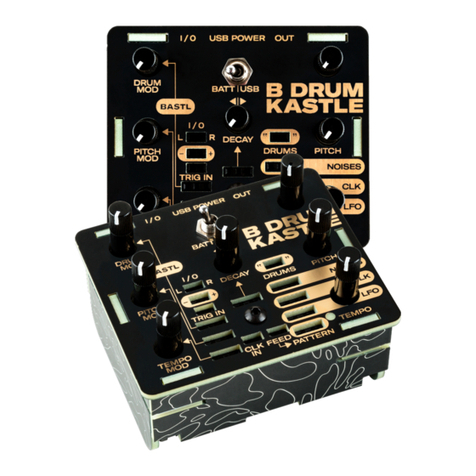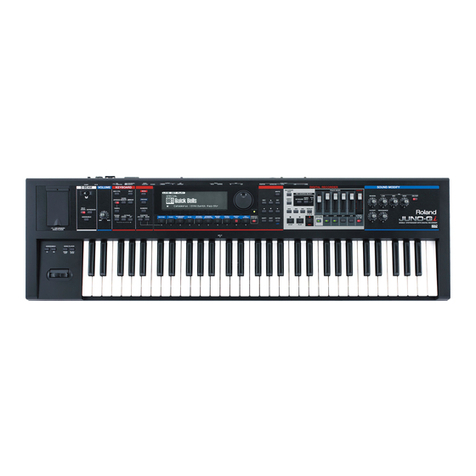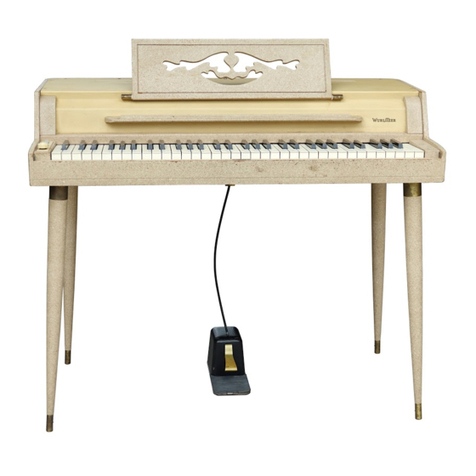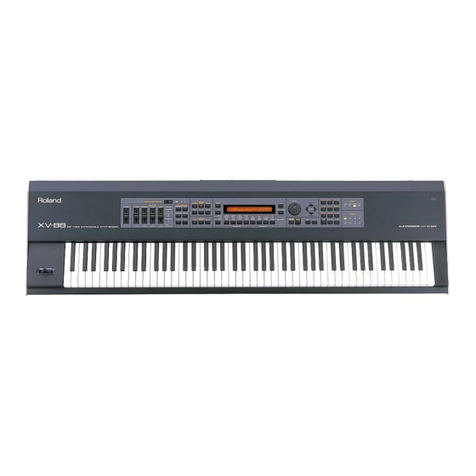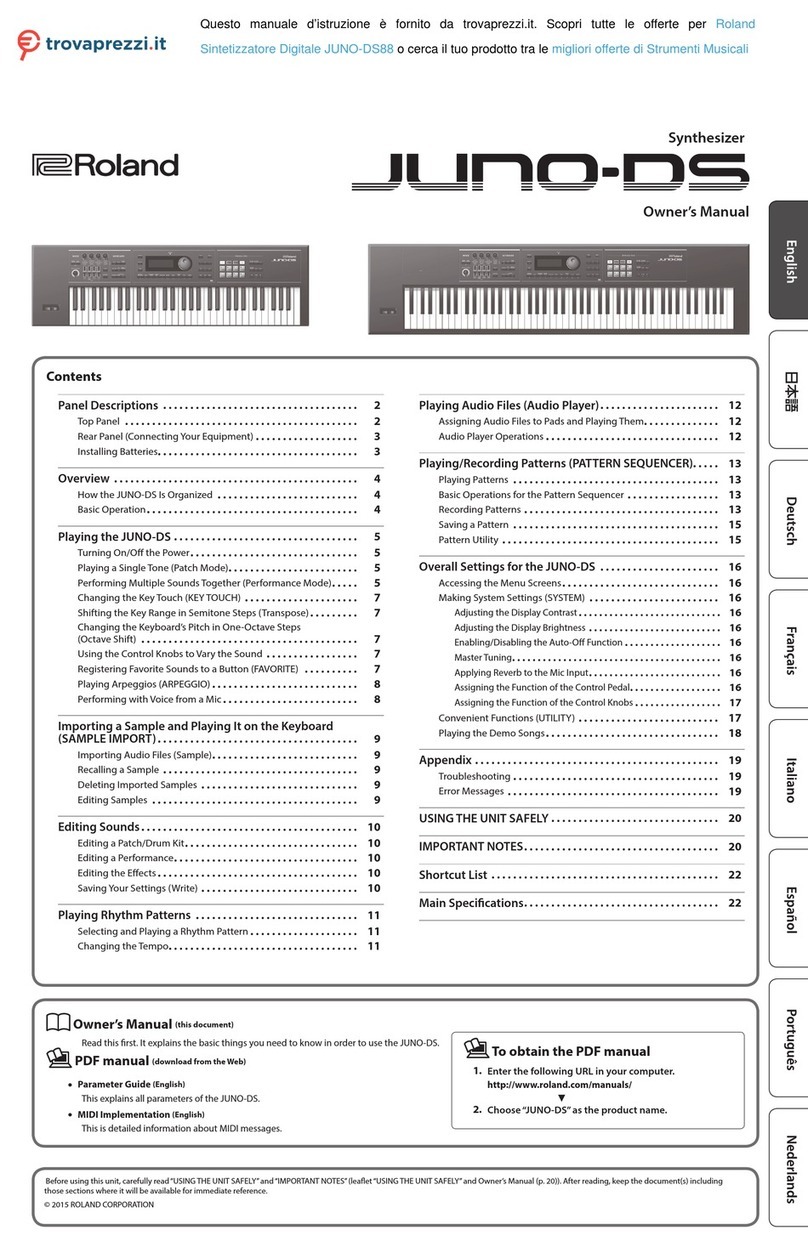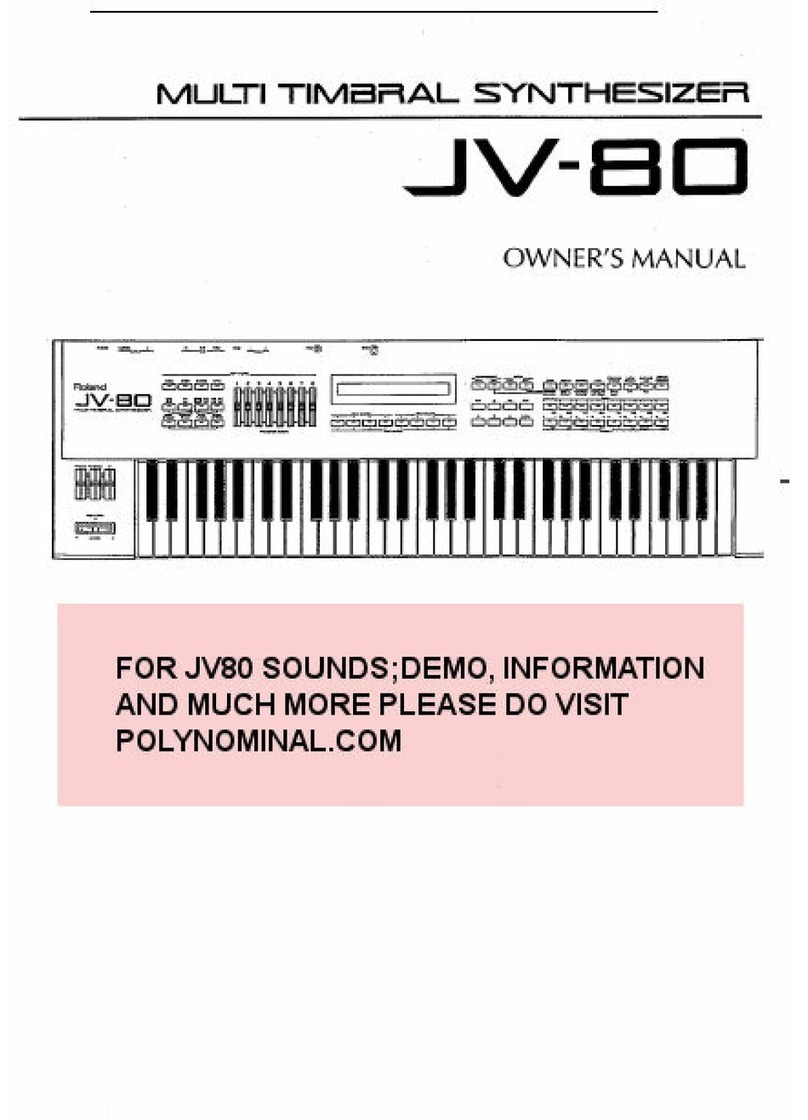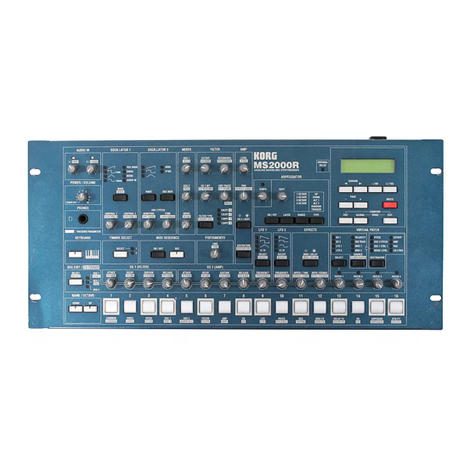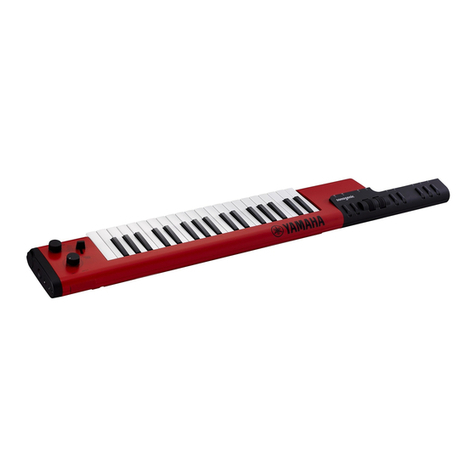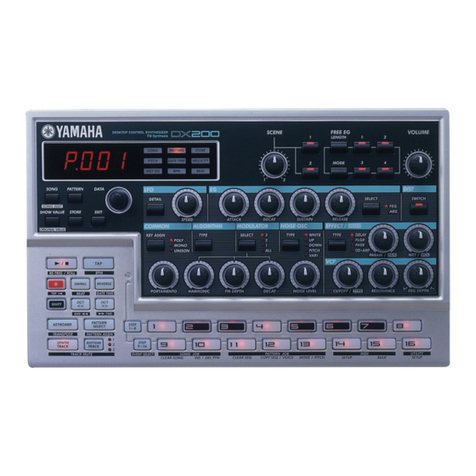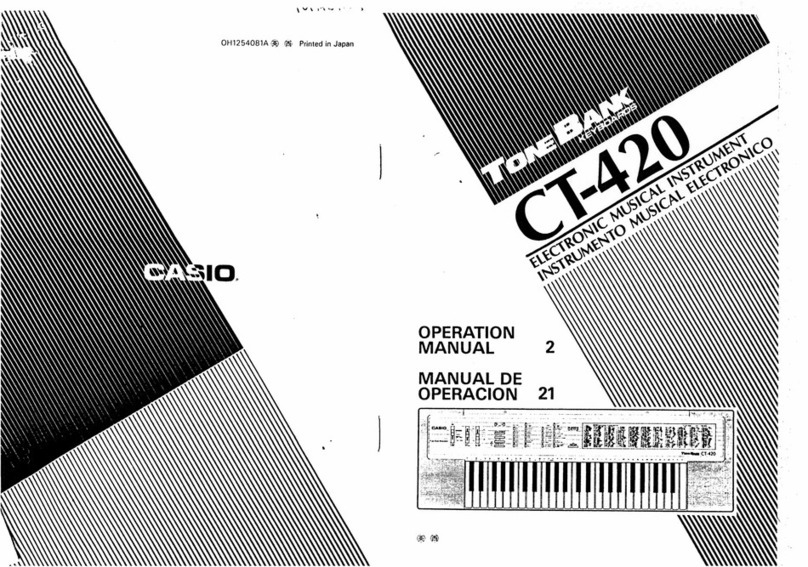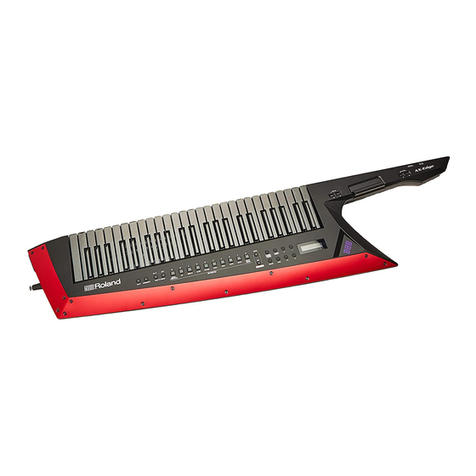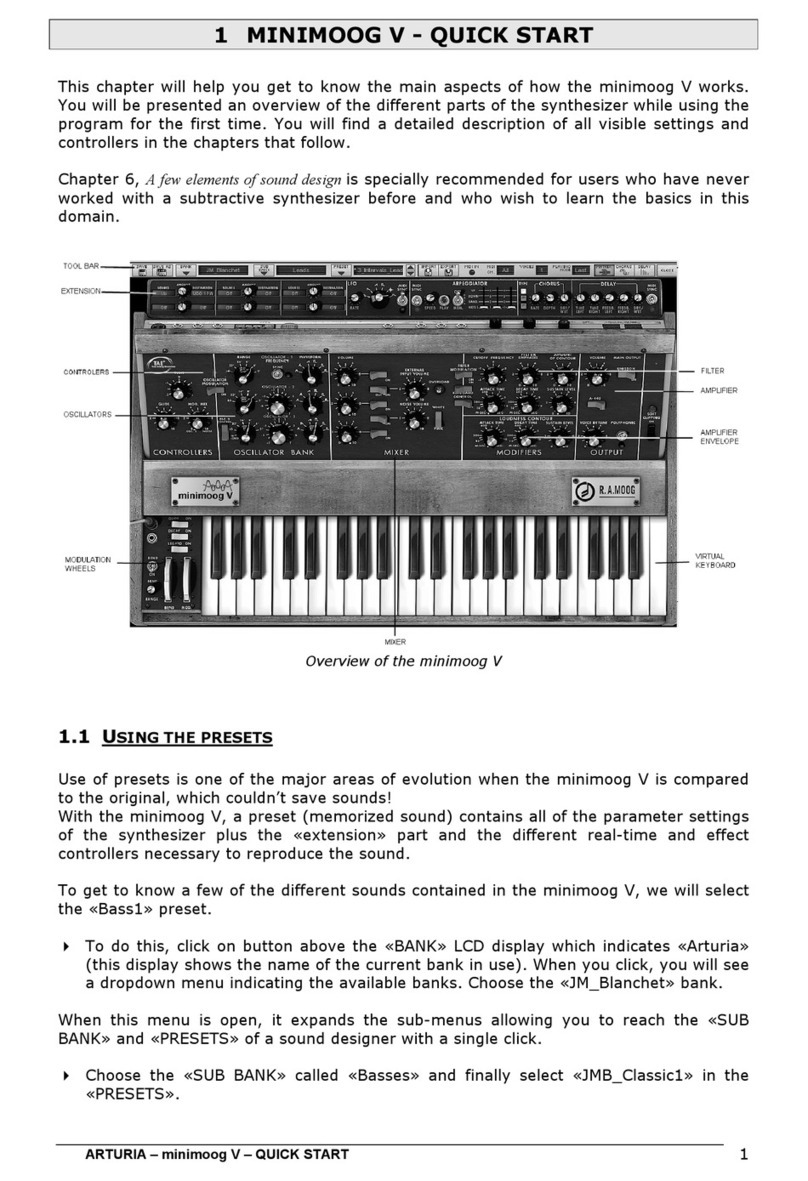Beast Tek Dirty Glitch v2.0 User manual

www.beast-tek.com Dirty Glitch Assembly Manual | 1

www.beast-tek.com Dirty Glitch Assembly Manual | 2
Bill of Materials
Dirty Glitch IO Board BOM
D1, D2, D3 7 Segment Display 0.56" (common cathode) 3
LED1 3mm LED 1
R1,R2, R3, R4 220 Ohm Resistor 1% Red-Red-Black-Black-Brown 4
C1 10uf Electrolytic Capacitor 10uf 1
R5, R6, R7, R8, R9, R10 1K Ohm Resistor 1% Brown-Brown-Black-Black-Brown 6
R11 10K Ohm Resistor 1% Brown-Red-Black-Black-Brown 1
D4,D5, D6, D7, D8, D9, D10, D11 BAT85 Diode 8
S1, S2, S3 SPST Switch 3
SW1 ALPS Rotary Encoder 1
JP1 24 Way Pin Header Single Row MALE 1
JP2 4 Way Pin Header Single Row MALE 1
PA, PB, PC, PD 5K Ohm 16mm Right Angle Potentiometer 4
3.5mm Mono Socket 5
Dirty Glitch Brain Board BOM
IC1 ATMEGA1284P 1
IC2 TL074 OPAMP TL074 1
IC3 7805 5v 1A Voltage Regulator 7805 1
D1, D2, D3 IN4004 Power Diode IN4004 3
Q1 20mhz Crystal 1
C1, C19 100uf Electrolytic Capacitor 100uf 2
C4, C5 22pf Ceramic Capacitor 22 2
C11, C12 220nf Green Cap 224 2
C13, C14 4.7uf Electrolytic Capacitor 4.7uf 2
C15 10uf Electrolytic Capacitor 10uf 1
C17 DO NOT POPULATE N.A.
C22 470uf Electrolytic Capacitor 470uf 1
C2, C3, C8,C18, C20, C21, C23 100nf Blue Monolithic Capacitor 104 7
C6, C7, C9, C10, C16 220nf MKT Capacitor 224 5
R1, R8, R9, R10, R11, R13, R14 10K Ohm Resistor 1% Brown-Red-Black-Black-Brown 7
R2 39 Ohm Resistor 1% Orange-White-Black-Gold-Brown 1
R3 75 Ohm Resistor 1% Violet-Green-Black-Gold-Brown 1
R4, R5, R6, R7, R12 330 Ohm Resistor 1% Orange-Orange-Black-Black-Brown 5
R15 1K Ohm Resistor 1% Brown-Brown-Black-Black-Brown 1
JP1 4 Way Pin Header Single Row FEMALE 1
JP2 ICSP - do not populate 1
JP3 24 Way Pin Header Single Row FEMALE 1
JP4 Shrouded 10pin (2x5) IDC Header (Eurorack Power) 1
20 pin Machine pin IC socket strip 2
7 pin Machine pin IC socket strip 2

www.beast-tek.com Dirty Glitch Assembly Manual | 3
Main PCB / “Motherboard”
Step 1
Take the 40 pin machine pin socket strips and cut one in half (2 pieces 20 pins each) using a sharp utility
knife or side cutters. Also cut 2 x 7 pin pieces from the remaining piece. Tip: You can measure the cut
using the PCB as a guide.
Step 2
Solder the machine pin strips IC into place for IC1 and IC2. Tip: This step can be made a lot easier using a
small piece of scrap metal or rigid cardboard slightly larger than the PCB.
First insert the machine pin strips into place, then sitting the metal/cardboard on top and applying a
small amount of pressure, flip the board over so the pins can be soldered in place.
Tip: Solder only 2 pins of each socket at first to hold them into place. Now flip the board over to make
sure the socket strips are sitting at right angles to the PCB. If required, they can be adjusted easily by
heating the 2 joints one at a time and maneuvering the socket into place.

www.beast-tek.com Dirty Glitch Assembly Manual | 4
When the strip is seated correctly, continue.
Step 3
Now is the perfect time to solder the 20mhz crystal into place. The crystal should not sit in contact with
the PCB. Soldering the crystal now means the machine pins can be used as a guide so that the crystal will
sit approx. 1mm from the board.
Now solder the remaining IC pins and crystal.

www.beast-tek.com Dirty Glitch Assembly Manual | 5
Step 4
Cut the female pin header down into 1 x 24 piece and 1 x 4 piece. Tip: once again the PCB can be used as
a guide, use a small pair of pliers to remove the 25th pin so the blank space can be used as a cutting
guide. Now cut the pin header socket using side cutters, if desired then use a file to clean up the edges.
Step 5
IMPORTANT!!! The female pin header strips must be installed on the REVERSE (non silk screened side).
Install the pin headers into their locations (JP1, JP4) on the reverse side of the board.
Once again use a scrap piece of metal/cardboard so that the board can be flipped over for soldering
without the pieces falling out.

www.beast-tek.com Dirty Glitch Assembly Manual | 6
Only solder 2 pins on each strip, then turn the board over to inspect and make sure the header strips are
seated at a right angle and that they are flush with the PCB board. If required, the header strip can be
adjusted by heating one joint at a time and gently moving the header strip into the correct location.

www.beast-tek.com Dirty Glitch Assembly Manual | 7
Once seated correctly, solder the remaining header strip pins.

www.beast-tek.com Dirty Glitch Assembly Manual | 8
Step 5
Install the 7805 voltage regulator (IC3) into place (refer to photos below to ensure correct orientation if
unsure), take it slowly and give the component enough time to cool down between soldering each pin.
Also install the 3 x IN4004 power diodes (D1, D2, D3). Make sure the polarity of the diodes is correct -
the stripes on the diode should match the stripes on the silk screen. Refer to the photos below if
uncertain.
Once soldered, trim off the component legs using side cutters.
Step 6
Install and solder the 2 x 22pf ceramic capacitors (C4, C5) and the 7 x 100nf blue monolithic capacitors
(C2, C3, C8, C18, C20, C21, C23).

www.beast-tek.com Dirty Glitch Assembly Manual | 9
Step 7
Install and solder the 2 x 100uf electrolytic capacitors (C1, C19) followed by the 10uf electrolytic
capacitor (C15) and the 470uf electrolytic capacitor (C22).
Step 8
IMPORTANT!! The orientation of the shrouded IDC power header is critical. Use the photos and steps
below to ensure it is oriented correctly.
Install the 10 pin shrouded IDC eurorack power socket (JP3). Use the photo below to ensure correct
orientation. Solder one of the pins to hold in it place. Now use the supplied power cable to ensure
correct orientation. If installed correctly, the red strip on the cable should be facing toward the bottom
of the board.
Once the IDC socket orientation has been confirmed using the power cable, solder the remaining pins.

www.beast-tek.com Dirty Glitch Assembly Manual | 10
Step 9
Time for some testing! Double check all solder joints. When you are happy with your work, connect the
power cable to a eurorack power supply so that test measurements can be made with a multimeter.
IMPORTANT: Do NOT do this in a case with other modules installed. If there is a fault with your work, it
could fry/burn/destroy other modules connected to the same power system.
Using a multimeter set to DC volts with a range capable of measuring 5v – 24v, test the voltages at the
following points:
IC2 – connect the positive probe to pin 4 and the negative probe to pin 11.
You should get a reading of between 23v to 24v .. the power diodes used to protect the module against
reverse power connection do cause a small voltage drop of approx. 0.4v
In the photo below, my reading is 22.8v because I am using a 4ft power cable (which causes significant
voltage drop) so that I can assemble and take photos easily.

www.beast-tek.com Dirty Glitch Assembly Manual | 11
IC2 – connect the positive probe to pin 4 and connect the negative probe to one of the ground pins on
C20 or C21 located directly above IC2.
You should get a reading of around 11v to 12v .. once again the diodes will cause a voltage drop of
approx. 0.2v and my measurements below are out by 0.8v because of the gigantic eurorack power cable.
IC2 – connect the positive probe to pin 11 and connect the negative probe to one of the ground pins on
C20 or C21 located directly above IC2.
You should get a reading of around -11v to -12v.

www.beast-tek.com Dirty Glitch Assembly Manual | 12
If these voltages do not check out, double check all solder joints and check the orientation of the voltage
regulator (IC3) and the power diodes.
If all the voltages check out, you are fine to continue on!
IMPORTANT: Make sure you disconnect the eurorack power cable before continuing work
on the PCB.
Step 10
IMPORTANT: Make sure you disconnect the eurorack power cable before continuing work
on the PCB.
Install the 330ohm resistor R12 and the 330nf MKT capacitor C16. Once soldered, trim the leads.
Step 11
Time for some more tests!
This time we will be checking the 5v supply voltage for the ATMega1284p microcontroller.
Connect the eurorack power supply cable again as per step 9.
Connect the negative probe from a multimeter to pin 11 of IC1. Connect the positive probe to pin 10.
The reading should be somewhere around 4.7v – 5.0v.

www.beast-tek.com Dirty Glitch Assembly Manual | 13
Connect the negative probe from a multimeter to pin 11 of IC1. Connect the positive probe to pin 9. The
reading should be somewhere around 4.75v – 5.0v.
Connect the negative probe from a multimeter to pin 11 of IC1. Connect the positive probe to pin 30.
The reading should be somewhere around 4.75v – 5.0v.
If these voltages do not check out, double check all solder joints and check the orientation of the voltage
regulator (IC3) and the power diodes.
If all the voltages check out, you are fine to continue on!
IMPORTANT: Make sure you disconnect the eurorack power cable before continuing work
on the PCB.

www.beast-tek.com Dirty Glitch Assembly Manual | 14
Step 12
IMPORTANT: Make sure you disconnect the eurorack power cable before continuing work on the
PCB.
Install 330nf MKT capacitors C6, C7, C9, C10. Install 330 ohm resistors R4, R5, R6, R7. Solder in place
then trim leads.
Step 13
Install 39 ohm resistor R2 and 75 ohm resistor R3. Next install the two 220nf green cap capacitors C11
and C12. Lastly install 1K ohm resistor R15. Solder and trim leads.

www.beast-tek.com Dirty Glitch Assembly Manual | 15
Step 14
Install the two 4.7uf electrolytic capacitors C13 and C14. Install the six 10K ohm resistors R8, R9, R10,
R11, R13 and R14. Solder and trim leads.
NOTE: C17 should not be populated.
Step 15
CAUTION: IC1 and IC2 are sensitive to static discharge (ESD)
Install IC1 and IC2. Take your time to make sure you do not bend any pins. Hold the IC at a 45 degree
angle to the PCB, PARTIALLY insert one row of pins and make sure they are all lined up correctly. Gently
apply even force from the side that is not inserted so that the inserted pins bend slightly so that the non
-inserted side lines up with its socket. Once lined up, apply a small amount of downward force so that
the IC is partially inserted/seated. Double check that all pins are inside their sockets and no pins have
bent outward or inward. Once you are happy everything is lined up, apply force so that the IC is fully
inserted into its socket.
Congratulations, you have finished the main board!! Turn the board over, double check all solder joints,
trim any excessive leads and inspect for missing solder joints.

www.beast-tek.com Dirty Glitch Assembly Manual | 16
Interface Board
IMPORTANT!! Note: all components facing the front of the module are to be mounted on the reverse
side / back / side WITHOUT the silk screen. Please refer to the photos within the build guide.
Step 1
Peel the protective film from the 7 segment displays D1, D2 and D3. Insert them onto the BACK of the
PCB (side without silk screen). Double check that they are oriented correctly using the decimal points on
the display as a guide.
Once the orientation has been confirmed, solder one lead from each display and check that they sit
flush with the board. If they are not flush, they can be adjusted easily by heating the single solder joint
and maneuvering them into place. Once you are happy, solder the rest of the leads and trim.
Step 2
On the component side, insert the BAT 85 diodes D4, D5, D6, D7, D8, D9, D10, D11 being careful of the
orientation. Make sure the black stripe on the diode aligns with the stripe printed on the PCB. Also
insert the 10uf electrolytic capacitor C1. Double check the orientation, solder in place and trim leads.

www.beast-tek.com Dirty Glitch Assembly Manual | 17
Step 3
Install the 220 ohm resistors R1, R2, R3 and R4 on to the BACK of the PCB (no silk screen side). Install the
10K resistor R11 on to the BACK of the PCB (no silk screen side). Solder in place, trim leads.

www.beast-tek.com Dirty Glitch Assembly Manual | 18
Install the six 1K ohm resistors R5, R6, R7, R8, R9 and R10 on to the BACK of the PCB (no silk screen side).
Solder in place, trim leads.
Step 4
JP1, JP2 - Trim the male header pins into a 24 way piece and a 4 way piece. Use the PCB as a guide if
required.

www.beast-tek.com Dirty Glitch Assembly Manual | 19
Insert JP1 and JP2 onto the front (silk screen side) of the PCB. Solder one pin at either end. Double check
the header is on a right angle and is flush with the PCB. When you are happy, solder the rest of the pins.
Step 5
Screw two silver 6mm M3 screws into the back (non silk screen) side of the board. Turn the board over
and screw the two 10mm stand offs onto the screw threads on the M3 screws on the silk screen side.
These will act as stabilizers when assembling the rest of the panel.

www.beast-tek.com Dirty Glitch Assembly Manual | 20
Step 6
IMPORTANT – Do NOT solder any of the switches, pots or rotary encoder in place until the front panel is
on!!! Soldering them on now will make assembling the front panel extremely difficult.
Place the four dust covers onto the back of the 16mm pots. Make sure they are lined up correctly and
push them down. If they are positioned correctly you will hear a ‘click’ sound as they lock into place.
Take the rotary encoder and screw one nut on. Make sure it is screwed all the way down to the base of
the thread. Finger tight is okay, no need for tools.
Insert the three SPST switches, press firmly so they are seated nice and tight against the PCB. Insert the
rotary encoder (SW1) into place. Insert the four 5K pots into place and lastly insert the 3mm led – be
careful make sure the shorter lead (cathode) is facing the edge of the board and the longer lead (anode)
is facing the center of the board (refer to photos below).
DO NOT SOLDER ANYTHING JUST YET!
Table of contents

